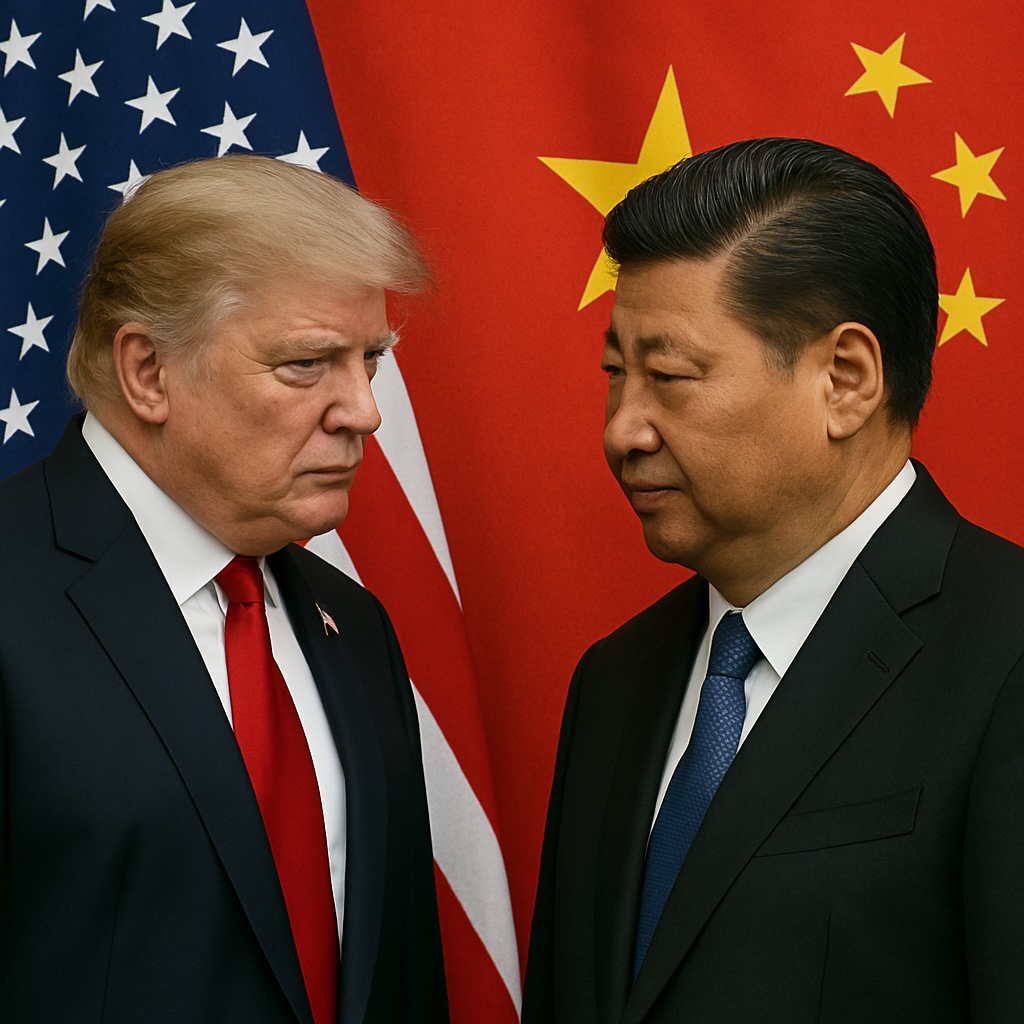Wall Street Dips as U.S.-China Trade Talks Loom, Markets Eye Tariff Clarity in Geneva
U.S. equity markets closed slightly lower Friday ahead of a closely watched weekend summit between American and Chinese trade officials in Geneva. The Dow Jones Industrial Average fell 119.07 points,

U.S. equity markets closed slightly lower Friday ahead of a closely watched weekend summit between American and Chinese trade officials in Geneva. The Dow Jones Industrial Average fell 119.07 points, or 0.29%, to 41,249.4. The S&P 500 slipped 4.03 points, or 0.07%, to finish at 5,659.91. The Russell 2000 dropped 0.17%, while the tech-heavy Nasdaq managed to eke out a modest gain of 0.78 points, ending the day at 17,928.9.
Traders showed caution as fresh signals from European intermediaries suggested that an immediate resolution to the ongoing trade conflict is unlikely. Despite early optimism that the Geneva meetings might pave the way for tariff relief, sobering commentary from Swiss officials tempered investor expectations.
Swiss Economy Minister Guy Parmelin said a mutual suspension of tariffs could be considered but downplayed the likelihood of a formal rollback during the negotiations. Swiss President Karin Keller-Sutter noted that while discussions with the U.S. were “encouraging,” the existing tariff freeze would remain in place throughout the talks.
This weekend’s discussions are the first in-person engagement between top-level U.S. and Chinese trade officials since President Donald Trump stunned global markets in April by raising tariffs on nearly all Chinese imports to 145%. Beijing swiftly retaliated with tariffs of up to 125%, jolting supply chains worldwide and triggering price spikes for consumer goods and industrial inputs.
Leading the U.S. delegation are Treasury Secretary Scott Bessent and Trade Representative Jamieson Greer, while Vice premier He Lifeng—an architect of China’s trade policy and a trusted aide to President Xi Jinping—heads the Chinese team. National Economic Council Director Kevin Hassett indicated Friday that Washington approaches the summit “with an open mind,” though no immediate breakthroughs are expected until talks wrap up.
President Trump has hinted at a possible reduction in tariffs, suggesting a new rate of 80%. However, economic analysts warn that trade flows often freeze when tariffs exceed 65%, making the proposed 80% rate still highly disruptive. Behind closed doors, administration officials are reportedly considering a more significant drop to the 50%–54% range, a move welcomed by U.S. retailers and manufacturers facing severe cost pressures.
Several contentious issues remain unresolved: U.S. access to Chinese markets, enforcement of the Phase One agreement, Beijing’s control of fentanyl precursors, and restrictions on critical minerals. A recent American demand for stricter fentanyl regulations reportedly rankled Chinese officials, who labeled it “arrogant” for referencing Communist Party directives. Still, both sides have signaled an intent to continue dialogue, with a second round of talks scheduled for July.
China’s latest trade data complicate the picture further. April exports rose 8.1% year-over-year, but shipments to the U.S. plunged 21%. Instead, Chinese firms have shifted focus to Southeast Asia and Latin America, raising suspicions among American regulators that goods may be rerouted through third-party countries to dodge tariffs.
Amid these shifts, Chinese firms like Dongguan City Jiaheng Toys are expanding manufacturing bases in Vietnam, a move emblematic of how tariffs are permanently altering global trade routes. Meanwhile, goldman sachs estimates that the ongoing tariff conflict places up to 16 million Chinese jobs at risk, while American retailers warn of empty shelves and longer lead times.
The best-case scenario in Geneva would involve a commitment to reduce tariffs to the 50%-60% range, coupled with a framework for future negotiations. Even absent a deal, market participants say that a joint pledge to maintain open communications and avoid further escalation would be welcomed as a stabilizing signal.
Market watchers will pay close attention to post-summit remarks from Bessent, Greer, and He Lifeng—and particularly from President Trump, whose social media comments have repeatedly moved markets. The stakes are high: while a sweeping agreement may be out of reach, even incremental progress could reset the tone of U.S.-China trade relations. Conversely, failure could accelerate the splintering of global supply chains and deepen the economic fallout.
Disclaimer: The views in this article are from the original Creator and do not represent the views or position of Hawk Insight. The content of the article is for reference, communication and learning only, and does not constitute investment advice. If it involves copyright issues, please contact us for deletion.